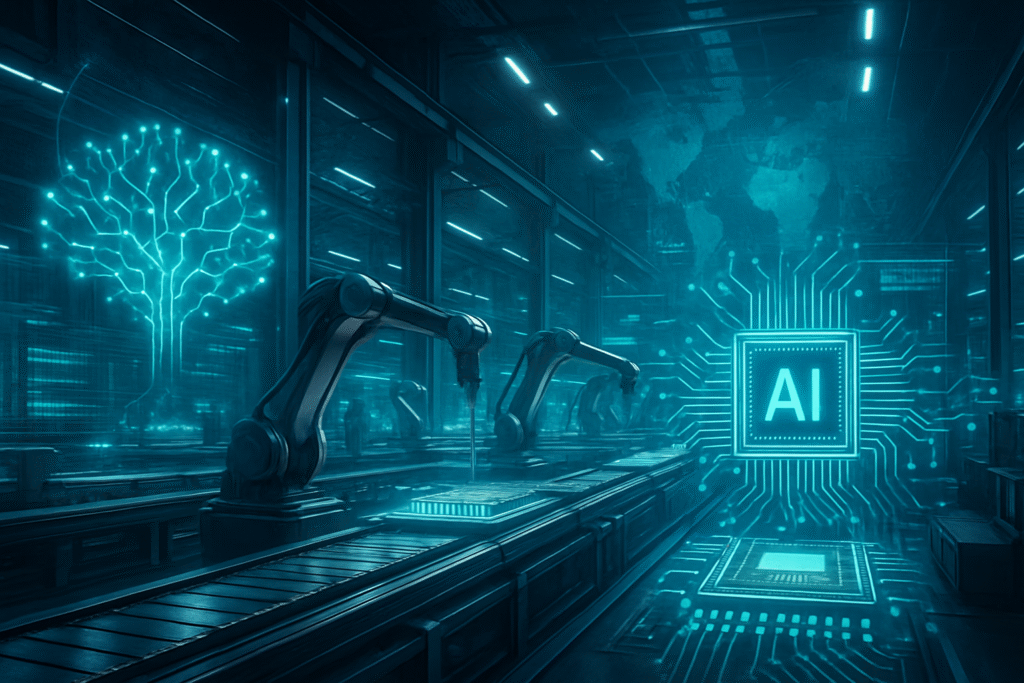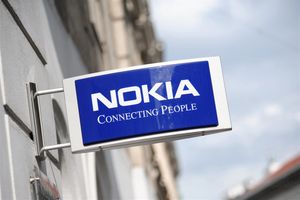
The global demand for Artificial Intelligence (AI) is reaching a fever pitch, and at the heart of this technological revolution stands Hon Hai Technology Group (TWSE: 2317), better known as Foxconn. Once primarily recognized as the manufacturing backbone for consumer electronics, Hon Hai has strategically pivoted, becoming an indispensable partner in the burgeoning AI infrastructure market. Its deep and expanding collaboration with Nvidia (NASDAQ: NVDA), the leading AI chip designer, is not only driving unprecedented sales for the Taiwanese giant but also fundamentally reshaping the landscape of AI development and deployment worldwide.
This dramatic shift underscores a pivotal moment in the AI industry. As companies race to build and deploy ever more sophisticated AI models, the foundational hardware – particularly high-performance AI servers and GPU clusters – has become the new gold. Hon Hai's ability to rapidly scale production of these critical components positions it as a key enabler of the AI era, with its financial performance now inextricably linked to the trajectory of AI innovation.
The Engine Room of AI: Hon Hai's Technical Prowess and Nvidia Synergy
Hon Hai's transformation into an AI infrastructure powerhouse is built on a foundation of sophisticated manufacturing capabilities and a decade-long strategic alliance with Nvidia. The company is not merely assembling components; it is deeply involved in developing and producing the complex, high-density systems required for cutting-edge AI workloads. This includes being the exclusive manufacturer of Nvidia's most advanced compute GPU modules, such as the A100, A800, H100, and H800, and producing over 50% of Nvidia's HGX boards. Furthermore, Hon Hai assembles complete Nvidia DGX servers and entire AI server racks, which are the backbone of modern AI data centers.
What sets Hon Hai apart is its comprehensive approach. Beyond individual components, the company is integrating Nvidia's accelerated computing platforms to develop new classes of data centers. This includes leveraging the latest Nvidia GH200 Grace Hopper Superchips and Nvidia AI Enterprise software to create "AI factory supercomputers." An ambitious project with the Taiwanese government aims to build such a facility featuring 10,000 Nvidia Blackwell GPUs, providing critical AI computing resources. Hon Hai's subsidiary, Big Innovation Company, is set to become Taiwan's first Nvidia Cloud Partner, further cementing this collaborative ecosystem. This differs significantly from previous approaches where contract manufacturers primarily focused on mass production of consumer devices; Hon Hai is now a co-developer and strategic partner in advanced computing infrastructure. Initial reactions from the AI research community and industry experts highlight Hon Hai's critical role in alleviating hardware bottlenecks, enabling faster deployment of large language models (LLMs) and other compute-intensive AI applications.
Reshaping the Competitive Landscape for AI Innovators
Hon Hai's dominant position in AI server manufacturing has profound implications for AI companies, tech giants, and startups alike. With Foxconn producing over half of Nvidia-based AI hardware and approximately 70% of AI servers globally – including those for major cloud service providers like Amazon Web Services (NASDAQ: AMZN) and Google (NASDAQ: GOOGL) that utilize proprietary AI processors – its operational efficiency and capacity directly impact the entire AI supply chain. Companies like OpenAI, Anthropic, and countless AI startups, whose very existence relies on access to powerful compute, stand to benefit from Hon Hai's expanded production capabilities.
This concentration of manufacturing power also has competitive implications. While it ensures a steady supply of critical hardware, it also means that the pace of AI innovation is, to a degree, tied to Hon Hai's manufacturing prowess. Tech giants with direct procurement relationships or strategic alliances with Hon Hai might secure preferential access to next-generation AI infrastructure, potentially widening the gap with smaller players. However, by enabling the mass production of advanced AI servers, Hon Hai also democratizes access to powerful computing, albeit indirectly, by making these systems more available to cloud providers who then offer them as services. This development is disrupting existing product cycles by rapidly accelerating the deployment of new GPU architectures, forcing competitors to innovate faster or risk falling behind. Hon Hai's market positioning as the go-to manufacturer for high-end AI infrastructure provides it with a strategic advantage that extends far beyond traditional electronics assembly.
Wider Significance: Fueling the AI Revolution and Beyond
Hon Hai's pivotal role in the AI server market fits squarely into the broader trend of AI industrialization. As AI transitions from research labs to mainstream applications, the need for robust, scalable, and energy-efficient infrastructure becomes paramount. The company's expansion, including plans for an AI server assembly plant in the U.S. and a facility in Mexico for Nvidia's GB200 superchips, signifies a global arms race in AI infrastructure development. This not only boosts manufacturing in these regions but also reduces geographical concentration risks for critical AI components.
The impacts are far-reaching. Enhanced AI computing availability, facilitated by Hon Hai's production, accelerates research, enables more complex AI models, and drives innovation across sectors from autonomous vehicles (Foxconn Smart EV, built on Nvidia DRIVE Hyperion 9) to smart manufacturing (robotics systems based on Nvidia Isaac) and smart cities (Nvidia Metropolis intelligent video analytics). Potential concerns, however, include the environmental impact of massive data centers, the increasing energy demands of AI, and the geopolitical implications of concentrated AI hardware manufacturing. Compared to previous AI milestones, where breakthroughs were often software-centric, this era highlights the critical interplay between hardware and software, emphasizing that without the physical infrastructure, even the most advanced algorithms remain theoretical. Hon Hai's internal development of "FoxBrain," a large language model trained on 120 Nvidia H100 GPUs for manufacturing functions, further illustrates the company's commitment to leveraging AI within its own operations, improving efficiency by over 80% in some areas.
The Road Ahead: Anticipating Future AI Infrastructure Developments
Looking ahead, the trajectory of AI infrastructure development, heavily influenced by players like Hon Hai and Nvidia, points towards even more integrated and specialized systems. Near-term developments include the continued rollout of next-generation AI chips like Nvidia's Blackwell architecture and Hon Hai's increased production of corresponding servers. The collaboration on humanoid robots for manufacturing, with a new Houston factory slated to produce Nvidia's GB300 AI servers in Q1 2026 using these robots, signals a future where AI and robotics will not only be products but also integral to the manufacturing process itself.
Potential applications and use cases on the horizon include the proliferation of edge AI devices, requiring miniaturized yet powerful AI processing capabilities, and the development of quantum-AI hybrid systems. Challenges that need to be addressed include managing the immense power consumption of AI data centers, developing sustainable cooling solutions, and ensuring the resilience of global AI supply chains against disruptions. Experts predict a continued acceleration in the pace of hardware innovation, with a focus on specialized accelerators and more efficient interconnect technologies to support the ever-growing computational demands of AI, particularly for multimodal AI and foundation models. Hon Hai Chairman Young Liu's declaration of 2025 as the "AI Year" for the group, projecting annual AI server-related revenue to exceed NT$1 trillion, underscores the magnitude of this impending transformation.
A New Epoch in AI Manufacturing: The Enduring Impact
Hon Hai's remarkable surge, driven by an insatiable global appetite for AI, marks a new epoch in the history of artificial intelligence. Its transformation from a general electronics manufacturer to a specialized AI infrastructure titan is a testament to the profound economic and technological shifts underway. The company's financial results for Q2 2025, reporting a 27% year-over-year increase in net profit and cloud/networking products (including AI servers) becoming the largest revenue contributor at 41%, clearly demonstrate this paradigm shift. Hon Hai's projected AI server revenue increase of over 170% year-over-year for Q3 2025 further solidifies its critical role.
The key takeaway is that the AI revolution is not just about algorithms; it's fundamentally about the hardware that powers them. Hon Hai, in close partnership with Nvidia, has become the silent, yet indispensable, engine driving this revolution. Its significance in AI history will be remembered as the company that scaled the production of the foundational computing power required to bring AI from academic curiosity to widespread practical application. In the coming weeks and months, we will be watching closely for further announcements regarding Hon Hai's expansion plans, the deployment of new AI factory supercomputers, and the continued integration of AI and robotics into its own manufacturing processes – all indicators of a future increasingly shaped by intelligent machines and the infrastructure that supports them.
This content is intended for informational purposes only and represents analysis of current AI developments.
TokenRing AI delivers enterprise-grade solutions for multi-agent AI workflow orchestration, AI-powered development tools, and seamless remote collaboration platforms.
For more information, visit https://www.tokenring.ai/.






